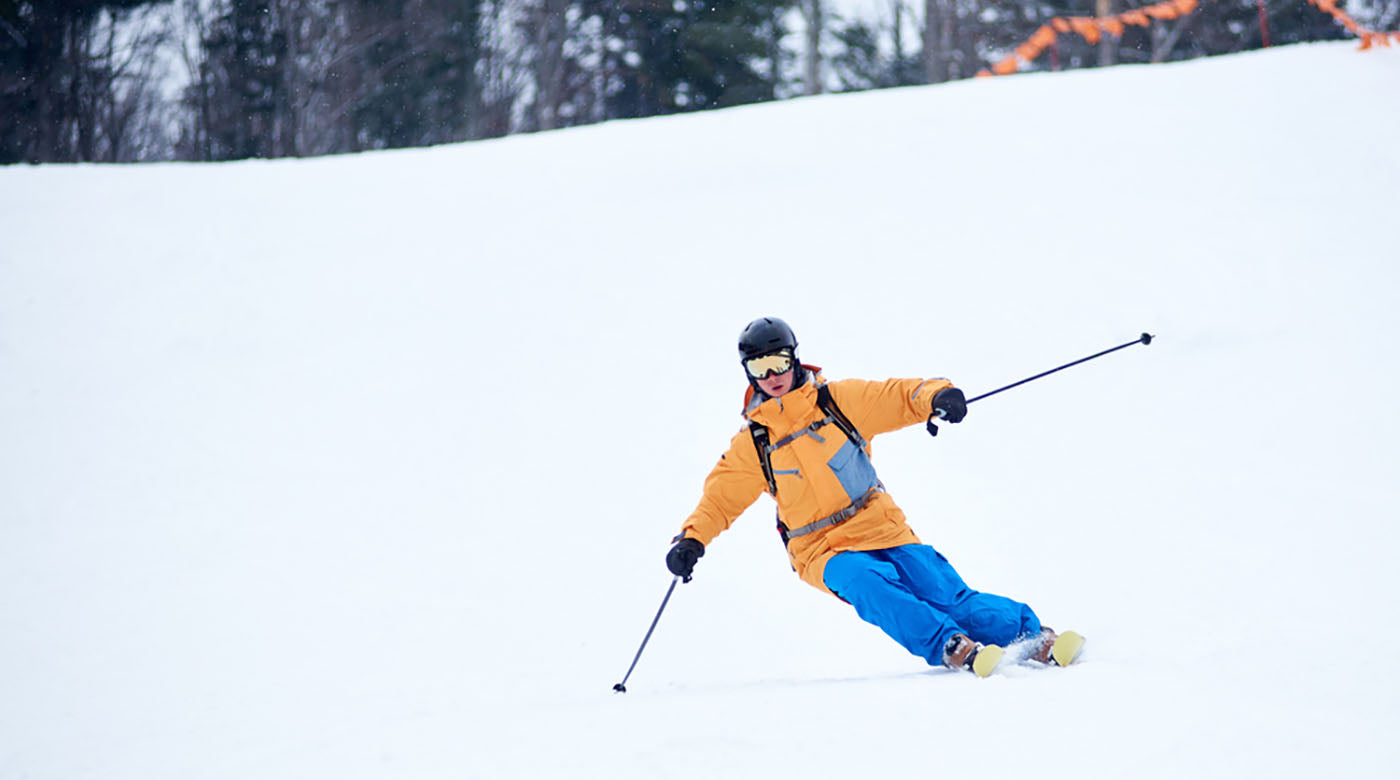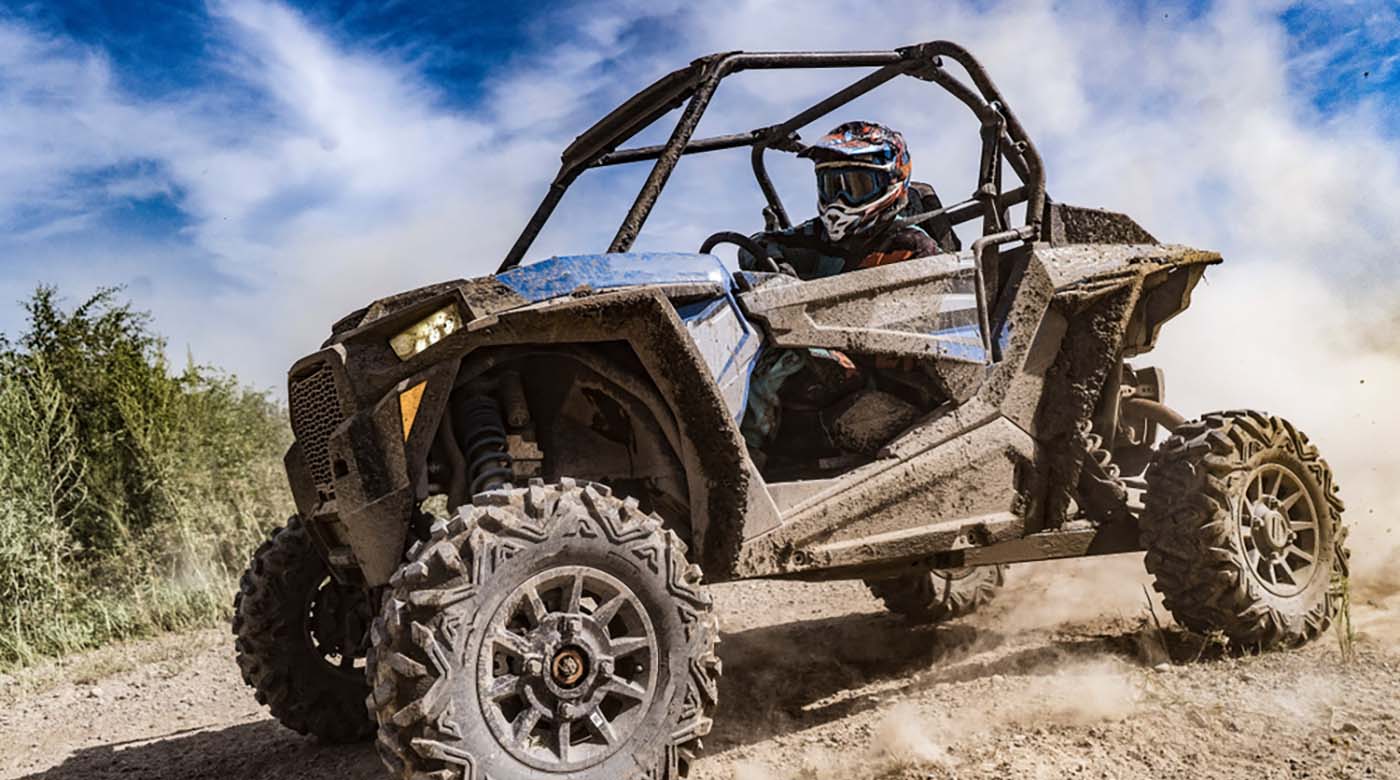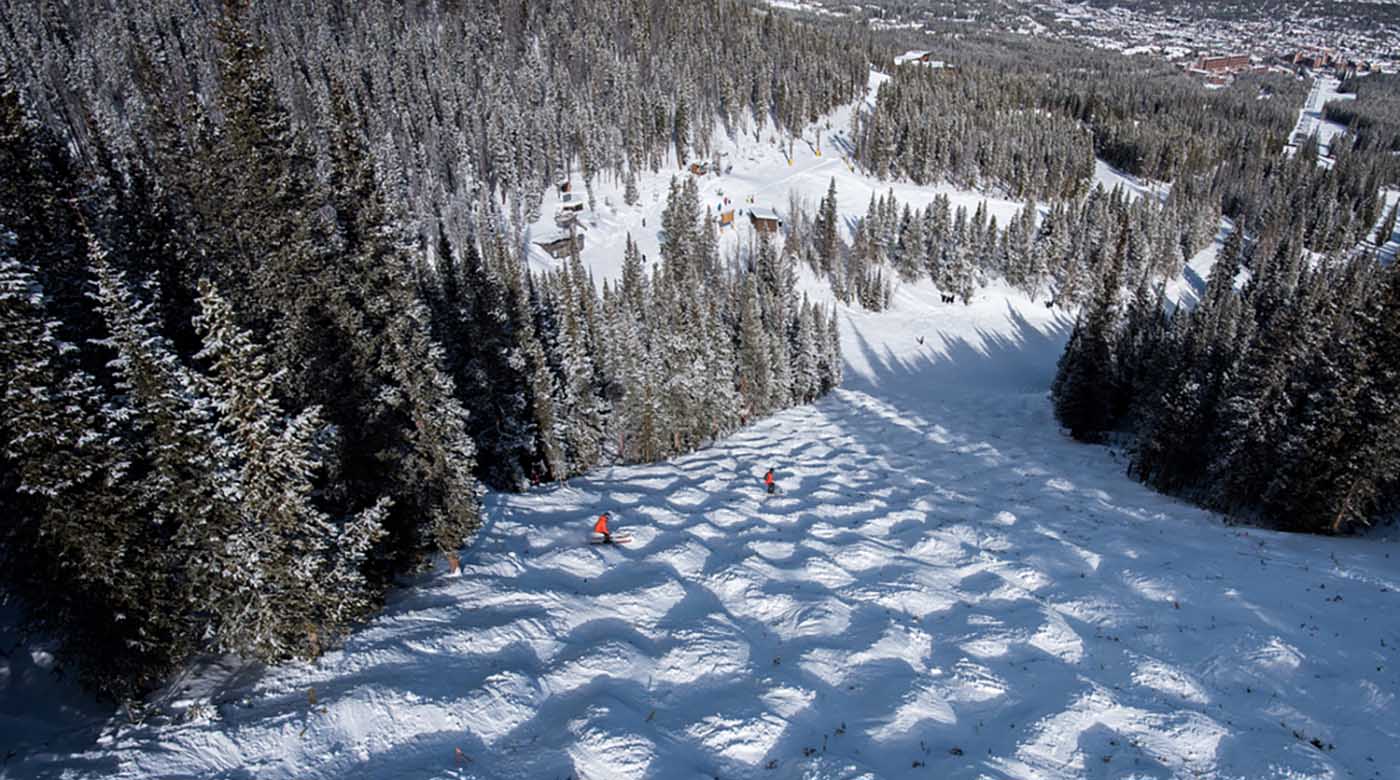Carving is the parallel parking of turning on skis. It’s a fluid, radiant motion that lights up the track and brings the audience to its heels. The pros seamlessly weave S-shaped spirals around hills and obstacles on their way down the mountain. Learning how to carve when skiing takes precision and balance — mastering it all comes down to the type of skis and when and how you adjust your body during the turn.
When to Carve When Skiing
Instead of pivoting, sliding, hopping or skidding into a turn, ski carving is when riders lean back and forth to initiate and control a turn when going downhill. It’s often used in alpine and mogul skiing to dodge obstacles. The raised middle section of the skis, known as the edge, dips into the snow during the turn, carving a path. Learn about the different types of skiing to see where carving techniques may be most helpful.
You’ll need lots of room to maneuver when practicing your arc. Find a moderate or beginner hill with a gentle slope gradient and powder that’s not slick or overly soft. It should be stable enough to support the edge and malleable enough to cling to your skis, but not too powdery or the edges will get stuck. Avoid practicing on busy tracks so you don’t hit anyone coming up behind you.

Source: Marian Weyo/Shutterstock.com
Ski Carving Equipment
Not all skis are made to carve. You want a pair with a longer edge, or camber skis, to make more contact with the snow when turning. The sidecut radius, or the arched curve on the side of your skis, affects the sharpness of your turns. Sharpen the edges and remove tiny imperfections with a file to cut through snow quickly. You may not have to replace your skis to carve. All downhill skis have some camber and sidecut features, so you should be able to practice turning, albeit wider than you may prefer.
Wear a full-face helmet to protect your head and neck from falls. Leaning too far or fast could leave you buried in snow. Create a waterproof layer from head to toe to get back up without worrying about getting too cold. Wear tight-fitting boots that react quickly to turns for optimal precision and control. Your feet shouldn’t slide around inside, and the skis should feel like an extension of your feet.
A coach or companion can help you perfect your timing. Pair your helmet with a ski helmet communication device to talk to another skier without taking your hands off the poles or shouting across the divide. If they ski behind you, they can analyze your angle and approach in real-time so you can adjust accordingly.
When you use the Cardo Packtalk Outdoor, you can connect up to 15 riders at a time using Dynamic Mesh Technology. It creates a direct link between each unit, so you can stay synced with everyone in range, even if someone falls out of formation.
Try the Cardo Packtalk Outdoor on Your Next RunThe Three Phases of Carving
To better refine your carving skills, we’ve broken down this movement into three separate phases:
Turning
Start with your skis shoulder-width apart, knees slightly bent and feet pressed forward in the bindings. Keep your core engaged, and be mindful of your stance throughout.
Initiate the turn by bending a knee in the direction you want to go. For example, if you want to turn left, roll your left knee and ankle forward and to the left so that the edge of your skis carves into the snow.
Shaping
Use your knee to apply pressure as you push down into the snow. The more force, the easier it is to turn. Let your knees move in that direction, with your upper body leaning slightly into the turn but stable above your waist. With a curved edge, the sidecut will guide you to the left.
Finishing
With your knees still bent to the left, straighten your legs without locking your knees and bring them under your waist to come out of the lean. As you return to the starting position, your path will straighten out.
Practice moving seamlessly from a left turn to a right once you return to a neutral stance.

Source: Silviu Hisom/Shutterstock.com
Learning how to carve requires open spaces with lots of room for error. The more you perfect your routine, the faster you can weave between obstacles, helping you take on more challenging runs. If you end up horizontal, adjust your timing and body position to stay centered without leaning too far to the right or left. Find a slope near you to start practicing this essential skill.





